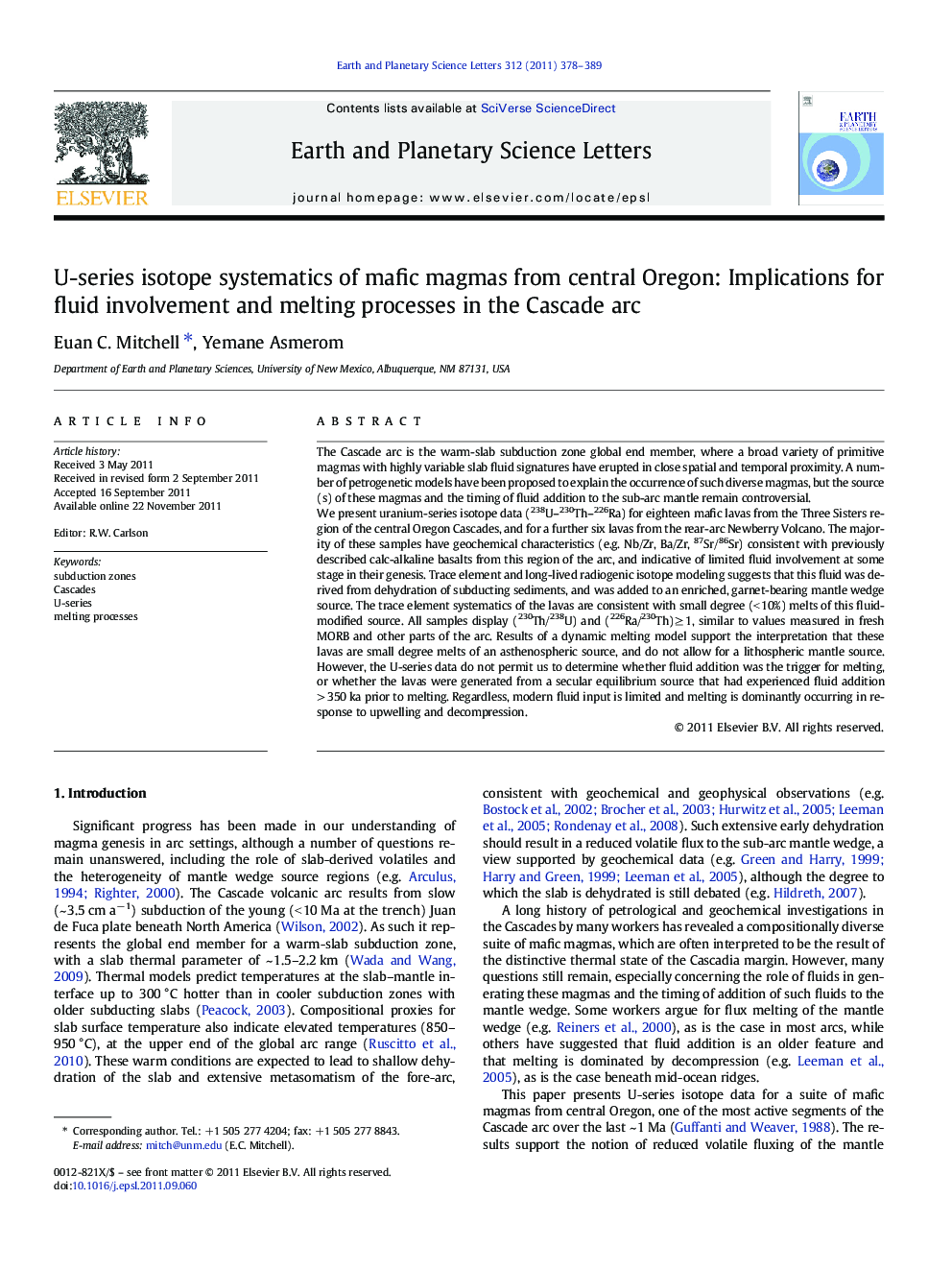| Article ID | Journal | Published Year | Pages | File Type |
|---|---|---|---|---|
| 4677709 | Earth and Planetary Science Letters | 2011 | 12 Pages |
The Cascade arc is the warm-slab subduction zone global end member, where a broad variety of primitive magmas with highly variable slab fluid signatures have erupted in close spatial and temporal proximity. A number of petrogenetic models have been proposed to explain the occurrence of such diverse magmas, but the source(s) of these magmas and the timing of fluid addition to the sub-arc mantle remain controversial.We present uranium-series isotope data (238U–230Th–226Ra) for eighteen mafic lavas from the Three Sisters region of the central Oregon Cascades, and for a further six lavas from the rear-arc Newberry Volcano. The majority of these samples have geochemical characteristics (e.g. Nb/Zr, Ba/Zr, 87Sr/86Sr) consistent with previously described calc-alkaline basalts from this region of the arc, and indicative of limited fluid involvement at some stage in their genesis. Trace element and long-lived radiogenic isotope modeling suggests that this fluid was derived from dehydration of subducting sediments, and was added to an enriched, garnet-bearing mantle wedge source. The trace element systematics of the lavas are consistent with small degree (< 10%) melts of this fluid-modified source. All samples display (230Th/238U) and (226Ra/230Th) ≥ 1, similar to values measured in fresh MORB and other parts of the arc. Results of a dynamic melting model support the interpretation that these lavas are small degree melts of an asthenospheric source, and do not allow for a lithospheric mantle source. However, the U-series data do not permit us to determine whether fluid addition was the trigger for melting, or whether the lavas were generated from a secular equilibrium source that had experienced fluid addition > 350 ka prior to melting. Regardless, modern fluid input is limited and melting is dominantly occurring in response to upwelling and decompression.
► Young mafic lavas were collected from the central Oregon Cascades. ► Trace element and Sr–Nd isotope data indicate limited fluid involvement. ► Arc-like and intraplate lavas can be generated from the same garnet-bearing source. ► U-series and REE data require a garnet-bearing, asthenospheric source. ► Modern fluid involvement is limited in Oregon and likely along the whole arc.
